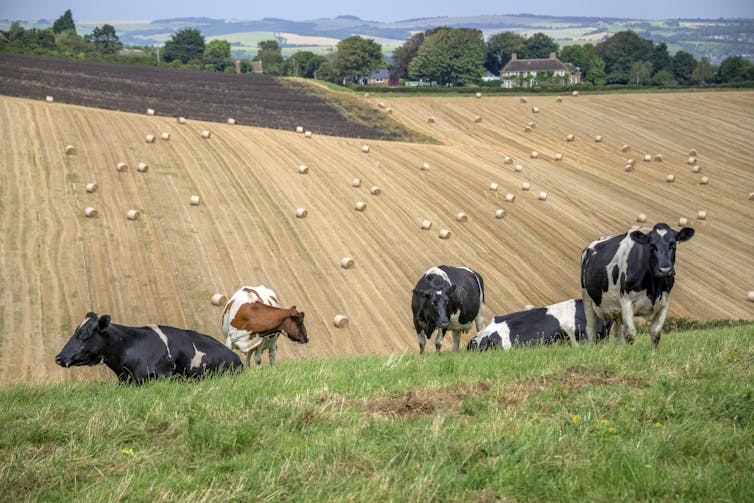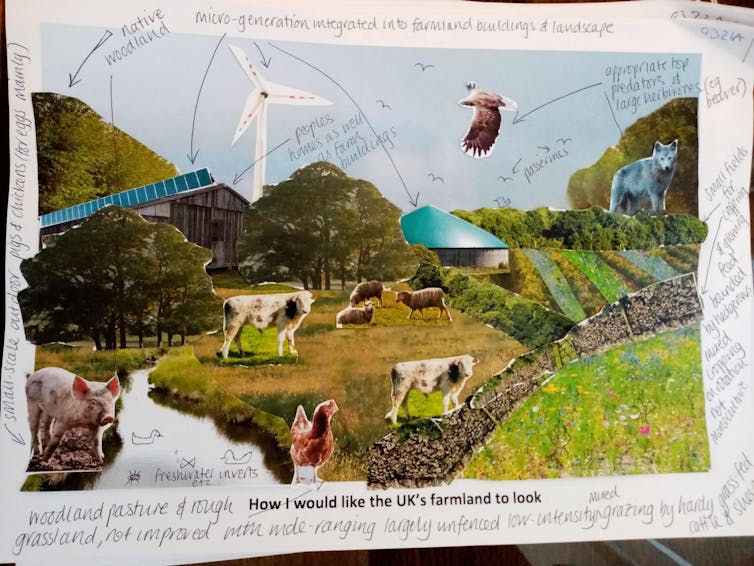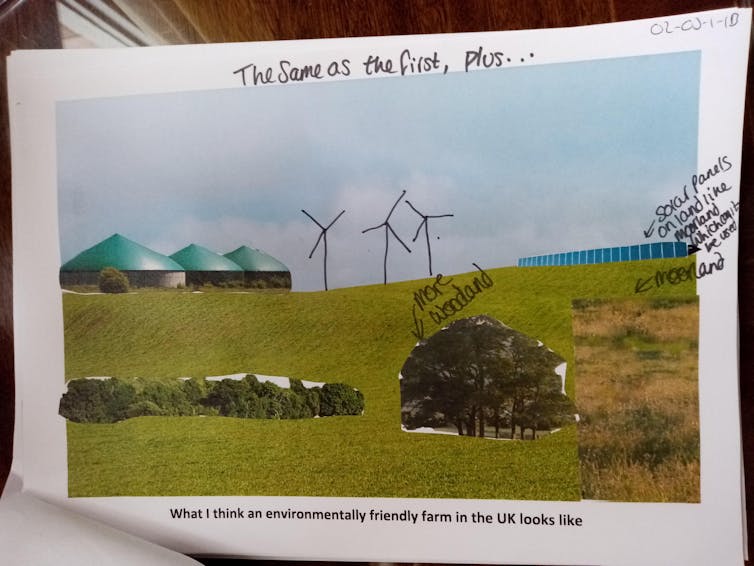countryside post-Brexit
Comment: How should the British countryside look post-Brexit?
Published on: 15 April 2021
Writing for The Conversation, Dr Niki Rust discusses a new study in which people created collages to demonstrate their vision for the future of Britain’s farmed landscapes.
Whatever your stance on Brexit, the UK’s departure from the EU has given the country a once-in-a-generation opportunity to reimagine how its land is managed. When it was still part of the EU, the UK abided by the Common Agricultural Policy (CAP), which provided subsidies to landowners and farmers based on how much food they produced.
Earlier versions of the CAP contributed to the destruction of large swaths of the EU’s forest and wildlife habitat. The CAP has since undergone various revisions to try to address the environmental degradation of food production, but without much success.
Policy analysts in Whitehall are busy devising new agricultural policies that will decide how the countryside looks and the services it provides post-Brexit. As taxpayers will fund these new schemes, the public should have a say in how the country’s farmland will be managed and the environmental benefits it offers.
We set out to find what the UK public wanted from their countryside. But we didn’t want to constrain their imagination and creativity with a simple questionnaire. Instead, we combined a nationwide survey of 2,050 adults with an exercise in which 80 people created collages to demonstrate their vision for the future of Britain’s farmed landscapes.

Livestock: nice to look at, bad for the planet
Collages allow people to express their ideas and desires in ways that are hard to capture with surveys and verbal interviews. Despite the obvious freedom the medium affords, collages are rarely used in studies attempting to understand how people would like their environment to look.
We asked 80 participants to create two collages: one to show their ideal UK farm landscape, and one to show what they thought an environmentally friendly farm would look like. We then asked them to explain their design choices. We also asked 2,050 adults taking part in the wider nationwide survey to rate ten images of farming landscapes using similar images to those used in the collages.
What we found really surprised us. Both the surveys and collages revealed that most people in the study liked seeing livestock in their ideal landscape, but many thought that, for a farm to be environmentally friendly, it should have less livestock due to the greenhouse gas emissions they produce. Instead, most participants thought “green” farms should have lots of trees and renewable energy installations, though many admitted that they didn’t like the look of wind farms. Interestingly, there was no significant difference in the kind of landscapes preferred by farmers compared with the rest of the public we surveyed.

Most of the people involved in the study said they were keen for farms to produce a mixture of food and benefits for the environment – such as carbon storage, wildflowers for insects to pollinate and trees to improve air quality – rather than focusing on just food or environmental benefits. The majority of the people surveyed also wanted to increase food production in the UK rather than importing food from elsewhere.
These findings reveal the complexity involved in making green agricultural policy. There are numerous trade-offs in producing food while still protecting the environment. For instance, while most participants in our study stated that they were less interested in these landscapes producing cheap food, studies on buyer behaviour show that consumers, especially those on lower incomes, are mainly motivated by price when it comes to their food choices.

Our participants often said they wanted farm landscapes to protect nature, but food production that is environmentally friendly is usually more expensive and produces less food overall, meaning more land is needed. One possible solution is intensifying food production on existing farmland. Or, using agro-ecological methods which integrate farming with the local ecology. One example is growing nut trees which offer habitat and store carbon alongside arable crops.
The UK government clearly has its work cut out devising policies that produce food in an environmentally friendly way at prices cheap enough to ensure retailers don’t source food from abroad and effectively offshore the environmental consequences. While it’s certain there will be winners and losers from Brexit, let’s hope the environment and the UK’s food security don’t fall into the latter category.
Niki Rust, Environmental Social Scientist, Newcastle University
This article is republished from The Conversation under a Creative Commons license. Read the original article.



